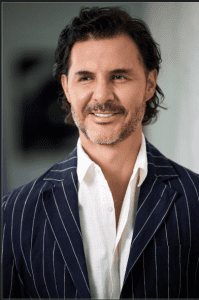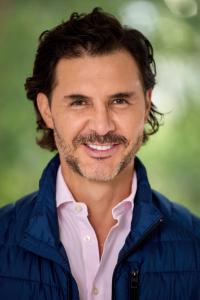German Rosete: Eternal competitive youth will be prolonged.
MIAMI, FLORIDA, ESTADOS UNIDOS, March 31, 2022 /EINPresswire.com/ — For decades, the belief that the optimum age for a soccer player was between 25 and 30 years old was completely accepted by everyone. Such stereotypes of yesteryear would never have conceived of Lionel Messi winning his seventh Ballon d'Or at 34, Robert Lewandowski winning the Golden Boot at 33 or Zlatan Ibrahimovic making a difference every weekend in Italy by breaking the 40 barrier. While the FIFA Top 100 in 2002 included only three players over 30, today we can find up to 41 players who manage to stay on the list.
"Although there are more and more players who decide to extend their cycle within the elite, the trend of the so-called "eternal competitive youth" is not unique and exclusive to football. While Cristiano Ronaldo and Lionel Messi are the stars of soccer, other great sports legends such as Rafael Nadal, Novak Djokovic or Tom Brady continue to demonstrate in their respective disciplines that age is no impediment to continue competing at the highest level," says German Rosete.
Whether it is a personal challenge, love of the sport or even economic necessity, fewer and fewer athletes are considering the option of retirement just past the age of 30.
The keys to eternal competitive youth.
"This is like in everyday life. Now with more studies, vaccinations and medications, the life expectancy of society in general is lengthening, and soccer players are no strangers to this. This is a turning point. Thanks to technology, I am sure that players such as Cristiano Ronaldo, Zlatan Ibrahimovic, among others, are setting the standard for a new era," says Dr. Jonathan Torres, a specialist in sports medicine.
Nowadays, talking about professionalism does not mean talking only and exclusively about the professionalism of each player, but about the routines and habits in general that he may develop during his competitive years. With the current established protocols, athletes have a stricter control in almost all their activities, from the nutritional area to the family area.
"Twenty years ago the professional routines said that a player trained two or three hours and went home, then everyone was more or less professional; now a player arrives at eight in the morning, almost all clubs make them eat at their facilities … and in the afternoon most players have their own personal trainer, who generates habits to improve posture, breathing … with yoga exercises, pilates or other therapies that help better recovery and rest, which is a vital part of the preparation because the body performs the adaptive process to the loads at rest."
Along with the new habits, today's soccer player has adopted a more professional role that has gone beyond the strictly sporting. A clear example of this is that, until a few years ago, it was not frowned upon for a soccer player to go out partying. Nowadays, the dissemination of inappropriate images on social networks can sometimes be a major obstacle. Since many professionals receive large sums of money for image fees, it is undesirable to have compromising photographs shared on the Internet.
The role of medicine.
"Before, players were more driven by passion, they endured more pain without thinking about the consequences for their bodies, thinking almost exclusively about the needs of the team; now they are more academic, more rational and cautious in their decisions".
This statement by coach Pako Ayestarán can be translated into the fact that medical habits have also undergone significant changes. In the old days, infiltration was a very common practice that has been losing ground in today's soccer. Whether it is because professionals are more aware of the consequences that this practice can bring with it, or the fact that squads are becoming increasingly larger, both players and clubs are resorting less and less to this alternative.
"Currently, top-level soccer players have a personalized medical follow-up, daily weight control and fat and muscle mass proportion controls", says German Rosete.
Similarly, electrical activity recordings are frequently performed on the muscles to assess the current state of fibers that can determine whether there is a risk of imminent injury.
In addition to all of the above, a strict control of the diet is carried out by the clubs and nutritionists on an individual basis. These diets take into account the amount of fats, carbohydrates and proteins necessary for each player. If the athlete manages to adapt to the rules and constant controls, it is easier for him to enjoy more years of high competition.
In spite of the gigantic advances in sports medicine and the efforts of athletes to maintain a healthy diet, it is still possible for them to enjoy more years of top-level competition.
Translated with www.DeepL.com/Translator (free version)
Sharon Turner
Lideres Empresariales
email us here





